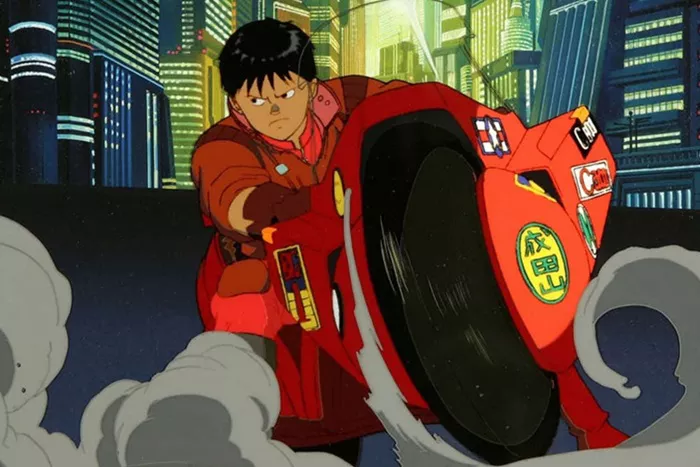Katsuhiro Otomo’s Akira stands as a monumental force in the evolution of anime, its influence reshaping the landscape of animated storytelling. Released in 1988, Akira established a new standard for visual artistry, intricately blending hand-drawn details with an immersive cyberpunk aesthetic. This groundbreaking work laid the groundwork for iconic series such as Dragon Ball Z and Neon Genesis Evangelion, reshaping anime as we know it today.
Set in a post-apocalyptic future, Akira opens with a dramatic backdrop: the ruins of Tokyo, devastated by an unnamed disaster reminiscent of the atomic bombings of Hiroshima and Nagasaki. This historical trauma echoes throughout the narrative, reflecting the collective memory of a society grappling with its past. The film transports viewers to Neo-Tokyo in 2019, a futuristic dystopia characterized by a stark contrast of architectural styles and social decay, revealing a deeply stratified society plagued by unrest and military oppression.
The narrative follows Kaneda and Tetsuo, members of a motorcycle gang navigating the chaotic streets of Neo-Tokyo. Their lives are irrevocably altered when Tetsuo encounters a child, an escaped government test subject, triggering latent psychic abilities within him. This discovery draws the attention of Dr. Onishi, a scientist intrigued by Tetsuo’s potential, while Colonel Shikishima, the military leader, views the boy with skepticism and fear.
The film’s exploration of post-war themes is evident as the leaders of Neo-Tokyo grapple with the implications of scientific advancements and their potential for destruction. Akira poignantly raises questions about the ethical limits of technology, a common thread in post-war narratives. The intricate animation showcases a world where machinery and technology coexist with human conflict, illustrated through elaborate visuals of high-tech devices, neon lights, and immersive cityscapes.
Describing the film’s visuals is a challenge; Akira offers a feast for the senses, juxtaposing vibrant urban life with the stark realities of its decaying outskirts. The meticulous detail in every frame, from the bustling neon streets to the chaotic energy of Tetsuo’s transformation, captivates audiences. Every element, from clouds to machinery, is rendered with an attention to detail that elevates the viewing experience beyond mere entertainment.
In contrast to the family-friendly animations that dominated the era, Akira took bold risks in its storytelling and artistic execution. With a production budget of approximately 500 million yen—a significant investment at the time—it not only achieved commercial success but also cemented its place in global pop culture, effectively serving as a catalyst for Japan’s soft power through anime.
Beyond its visual achievements, Akira captures the essence of a post-apocalyptic future through its character-driven narrative. Kaneda and Tetsuo, emblematic of youth left in the wake of destruction, grapple with their identities and the harsh realities of their environment. Tetsuo’s awakening of powers serves as a metaphor for the struggle for autonomy in a world marked by repression, while Kaneda’s relentless determination to save his friend highlights the importance of personal relationships amidst chaos.
Akira navigates the complexities of its narrative by intertwining various character arcs, including the authoritarian rule of Shikishima and the rebellion led by Kei. Based on Otomo’s extensive 120-chapter manga, the film compresses significant plot points into its two-hour runtime, resulting in some narrative ambiguities. However, the overarching themes of unrest and societal discord remain clear, resonating with contemporary audiences and reflecting ongoing global issues.
Importantly, Akira is undeniably cool. The film’s iconic imagery, particularly Kaneda’s red motorcycle, has become emblematic of anime culture, inspiring countless references in subsequent media. With its stylish visuals and frenetic energy, Akira has become synonymous with the cyberpunk genre, leaving an indelible mark on popular culture.
In its two-hour runtime and through the artistry of 160,000 animation cels, Akira continues to impress and influence. Rooted in societal critique, the film envisions a complex future that blends stylish aesthetics with poignant commentary on the human experience. It challenges viewers to confront the realities of social stratification and collective trauma, all framed within the story of two unlikely heroes. As both an artistic triumph and a cultural touchstone, Akira remains a cornerstone of the anime industry, inspiring generations of creators and fans alike.
Related Topics
10 Best Halloween Anime Of All Time, Ranked
10 Misconceptions Casual Fans Have About Anime
10 Sailor Moon Details You Didn’t Know Were Canon Only in the Anime


